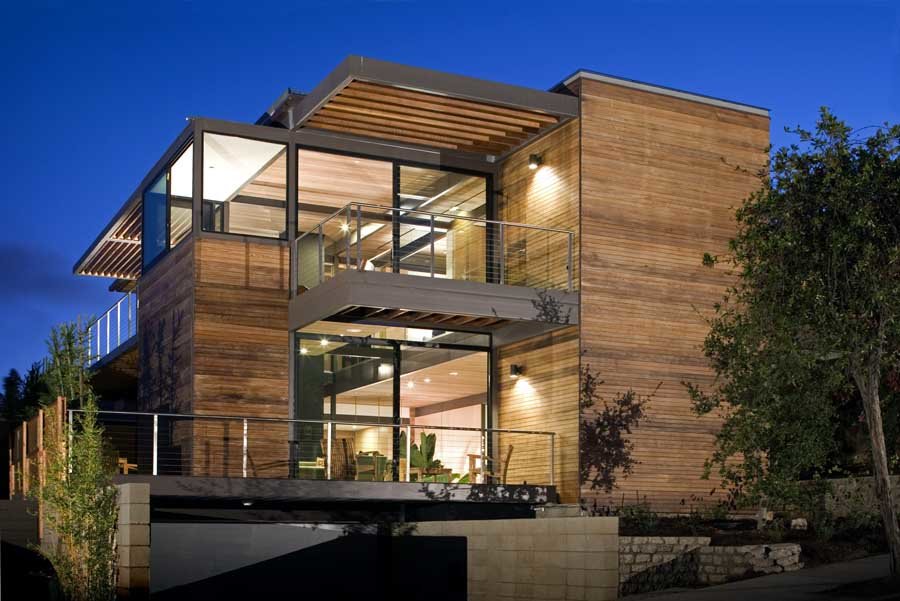
Not a day goes by without New Zealand’s housing crisis making news. A cataract of housing-related headaches fill our headlines: Auckland’s spectacular house prices, leaky homes, lack of housing stock and quality issues from the Christchurch rebuild. A mere trickle of solutions are seeping through, some more likely to cause harm than good.
What’s been conspicuously missing is insight into the potential for change at the building site itself. Could an innovative new approach to building houses deliver better quality and affordability?
Getting to the bottom of prefab
At Pure Advantage, an organisation that is all about investigating and promoting opportunities for New Zealand to thrive in the emerging global green economy, the feeling is that anything to reduce the economic drag of the misfiring housing sector and get greater numbers of kiwis into healthier, more sustainable homes has to be looked at closely. We believe offsite manufacturing (OSM) – or prefabrication – could be that ‘anything’.
In some quarters, the very mention of prefab is going to conjure memories of a drab, draughty temporary classrooms. But that was then. Today’s version of prefab is capable of combining stylish design with highly efficient and accurate offsite manufacturing methods.
Using prefabricated panels, for example, a house might be erected and made weathertight in a day and completed in six weeks, producing financial savings and minimising the environmental impact of the conventional build process, with its lamentable amounts of waste, noise and disruption.
Nikki Buckett, a building science advisor for the Ministry of Business, Innovation and Employment (MBIE) found through her research that German construction firms, for instance, can manufacture panels for houses offsite, within hours, and finished building onsite within a forthnight. While wholesale adoption of overseas models won’t be feasible, we could easily use some of these elements here.
Moreover, with a relative low capital investment, the building industry can adopt robotic OSM, and shift focus to deliver higher performing homes, with greater production efficiency.
A greater uptake of technology in the process will dramatically shorten time to deliver to market. This will also create opportunity for the industry to realign supply chains amongst land owners, developers, material suppliers, builders and ensure a better product for customers.

No real skin in the game yet
Last year, Pure Advantage sent out a Request for Expressions of Interest (REOI) to get a handle on the capacity and capability of the prefabrication sector. We found a lot of good intentions, but not many ventures with real skin in the game.
What a difference 12 months make. Today we launch our new look website with an in-depth investigation of prefab entitled “An Idea Whose Time Has Come”. The article doesn’t ignore the challenges prefab faces, but as the title suggests, it finds the planets aligning for a more meaningful uptake of prefab.
Christchurch and Auckland in particular urgently require more houses than our misfiring building industry seems capable of delivering, and I don’t think I’m alone in worrying what that might mean for quality.
Resistance & early believers
There’s a lot of resistance to change in the building industry. There’s plenty of incentive to keep knocking up big, expensive houses using conventional methods, and to hell with affordability or sustainability. Naturally, there will be some cases where OSM is not appropriate, but in the majority of new builds or even additions, low-rise and mid-rise buildings the technology is applicable.
Happily, however, some of our largest building companies have finally grasped the prefab nettle, and the opening of a $14- million panelisation factory in Christchurch by Spanbild and Mike Greer Homes will hopefully prove a catalyst for real change. Also happily, the government is trying to encourage greater uptake of prefabrication by reducing red tape.
Clearly, business as usual won’t cut it. Not when our biggest city requires 20,000 houses urgently just to meet the backlog, and people are giving up on the idea of ever owning their own house. Prefabrication isn’t a silver bullet, but it will make a difference.
We’ve always taken pride in the idea that this is a country of practically-minded innovators, yet the rest of the world is miles ahead when it comes to adopting offsite building methods. It’s time to catch up.
Simon Millar is at the CEO of Pure Advantage New Zealand.




